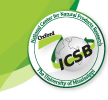Document Type
Oral Presentation
Location
Oxford Convention Center, 102 Ed Perry Boulevard Oxford, MS 38655
Event Website
https://oxfordicsb.org/
Start Date
15-4-2024 4:00 PM
End Date
15-4-2024 4:30 PM
Description
The growing popularity of botanical products combined with the challenges of the supply chain to meet the ingredient demand has created opportunities for dishonest companies to take advantage of their clients for financial gain. Suppliers and manufacturers must comply with cGMPs (current Good Manufacturing Practices), specifically when it comes to the basic requirements of properly identifying crude botanicals in whole, cut, or powdered form, as well as botanical extracts and essential oils. Despite this regulatory requirement, a large portion of botanical ingredients and products sold in the marketplace are adulterated. Popular ingredients in high demand are intentionally substituted, diluted, or “fortified” with lower-cost substitutions. While most of the time laboratory assays can detect adulterants, some adulteration techniques are very sophisticated so the ingredient can mimic the physical properties or chemical composition of the genuine botanical and deceive the analytical methods used for botanical authentication. Furthermore, when a supplier faces a material rejection due to adulteration, the material is often sent back to the supplier and sold to another customer, with potentially lower quality standards or ability to detect the adulterant. Despite continuous efforts of the natural product industry, there are still ongoing challenges with analytical methods allowing laboratories to reveal mischief, and there is a need for guidance regarding the disposition of material that is adulterated or irreparably defective.
Recommended Citation
Banaszewski, Katie, "Preventing Ingredient Adulteration to Maintain Botanical Integrity" (2024). Oxford ICSB. 9.
https://egrove.olemiss.edu/icsb/2024_ICSB/Schedule/9
Publication Date
April 2024
Accessibility Status
Searchable text
Included in
Preventing Ingredient Adulteration to Maintain Botanical Integrity
Oxford Convention Center, 102 Ed Perry Boulevard Oxford, MS 38655
The growing popularity of botanical products combined with the challenges of the supply chain to meet the ingredient demand has created opportunities for dishonest companies to take advantage of their clients for financial gain. Suppliers and manufacturers must comply with cGMPs (current Good Manufacturing Practices), specifically when it comes to the basic requirements of properly identifying crude botanicals in whole, cut, or powdered form, as well as botanical extracts and essential oils. Despite this regulatory requirement, a large portion of botanical ingredients and products sold in the marketplace are adulterated. Popular ingredients in high demand are intentionally substituted, diluted, or “fortified” with lower-cost substitutions. While most of the time laboratory assays can detect adulterants, some adulteration techniques are very sophisticated so the ingredient can mimic the physical properties or chemical composition of the genuine botanical and deceive the analytical methods used for botanical authentication. Furthermore, when a supplier faces a material rejection due to adulteration, the material is often sent back to the supplier and sold to another customer, with potentially lower quality standards or ability to detect the adulterant. Despite continuous efforts of the natural product industry, there are still ongoing challenges with analytical methods allowing laboratories to reveal mischief, and there is a need for guidance regarding the disposition of material that is adulterated or irreparably defective.
https://egrove.olemiss.edu/icsb/2024_ICSB/Schedule/9


